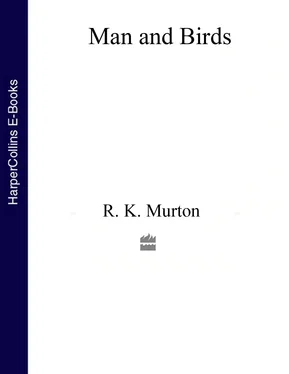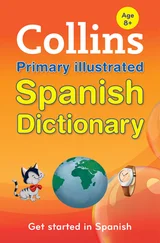The level of damage to sheep seems to be markedly similar in widely separated areas. A survey in Radnorshire, Breconshire and Montgomery in 1969 showed that under 0.01% of 114,751 ewes at risk were attacked by crows, while 0.6% of 119,680 lambs at risk were attacked, the figure becoming 1.4% if only farms where attacks actually occurred are included (K. Walton, in litt.). In Australia, Smith reckoned that avian predators were responsible for the death of less than 2% of the lamb crop, and other Australian studies indicate that the live lambs attacked are already ailing; many have no milk in their stomachs and seem not to be receiving proper maternal care. The work of Alexander et al. (1959) in Australia has shown that sheep in their lambing flocks react relatively little towards foxes, more towards crows and most of all towards dogs. Unlike foxes, crows make very determined efforts to attack lambs.
As already discussed (see here), losses are not additive in these circumstances and it is likely that deaths caused by predatory birds simply improve the survival chances for the remaining animals, so that the final yield is unaffected. There would have to be a very much lower death-rate of sheep and lambs from natural causes before it could be accepted without qualification that predatory birds were depressing the output. The survival of sheep must depend largely on the carrying capacity of the hill, and an effective reduction in sheep mortality would best be obtained by improvements in land management. In large areas of Britain overgrazing and bad land management have been responsible for much sheep carrion, and this in turn supports the predator population. It is this sort of problem that needs evaluation and the immediate answer is not an out-and-out war on the birds. In some circumstances these birds may indeed be troublesome, even allowing for natural losses – but biologists cannot accept the extrapolation of damage costs, as in the example above.
In Britain it is common to see starlings, jackdaws, and less often magpies, associating with livestock and even perching on the backs of the animals. They catch the insects flushed from the ground by the animals’ movements or those attracted to the beasts, such as various flies. In addition, they sometimes search the fur for ticks and other parasites, like the tick-birds of Africa. The habit does not cause trouble in this country but in the U.S.A. magpies (a subspecies of the European form, which has a ring distribution extending all round the world) sometimes become more adventurous. Schorger (1921) and Berry (1922) have described how the birds learned to peck open a small hole in the sheep’s back, which they gradually enlarged until they located the kidneys which provided a favoured delicacy. Unshorn sheep on open range were sufficiently protected by the thick fleece, and it was only after shearing, when the animals were confined to untended paddocks, that the trouble began; possibly the birds were originally attracted by small wounds left by the shearers. Even small sores provide sites for secondary attack by blowflies. This kind of damage is reminiscent of the attacks of the kea parrot of New Zealand.
The progression from a commensal to a parasitic association between bird and mammal host is well seen in the red-billed oxpecker in Kenya. These birds feed on the ticks and other insects gleaned from the larger game animals, and help the host by warning it of impending danger. Occasionally, they also make the most of blood clots and fragments of skin from any abrasion or wound and will purposely open up a sore with hammer-like blows to eat the serum and blood discharged. Van Someren (1951) comments that the wounds inflicted on the livestock are smooth saucer-like depressions, 1–3 inches in diameter, which do not suppurate, perhaps because the birds keep them clean. Oxpeckers feed on open sores by nibbling with a scissor-like motion as if squeezing out the blood and serum. The attacked animals seem untroubled and their wounds rapidly heal if protected from bird attack. The dependence of the oxpecker on ticks is emphasised in districts where insecticide dips are extensively used. In these places the bird has declined drastically rather than become more prone to flesh feeding as some people feared. The European starling has also been recorded as inflicting extensive wounds on cattle in Texas, by pecking at warbles (McCoy 1941). Apparently the birds were first stimulated to attempt this mode of feeding when more normal food supplies were inaccessible through frozen ground.
CHAPTER 4
BIRDS AND FORESTS
TO see oak woodland today in anything like its natural state, with a field layer of bluebells, bracken and brambles, and a shrub zone of holly and other small deciduous trees, one must seek out places like the New Forest or the Forest of Dean, or search for other isolated remnants, mostly derived from secondary plantings, which are scattered in small patches throughout the land. Oak in something like this condition had covered much of Britain for around 4,000 years, to be almost totally destroyed since the enclosures of the last 300 years. At sites in Breckland, pollen analysis reveals a decrease of tree pollen in about 3,000 BC followed by the appearance of grass ling and heather and there seems no doubt that Neolithic man was able to clear some quite extensive areas, to produce the heathland that exists today; that this has been maintained does of course owe much to sheep and rabbit grazing. These early efforts at forest clearance, though effective, were certainly made on a very local basis. The open nature of oak woodland allows the development of a rich associated flora of shrubs and herbs supporting a consequently diversified fauna; this diversity has also been facilitated by a long period of establishment enabling a wide variety of plants and animals to reach Britain from Europe. In contrast, beech woodland only spread to Britain at the end of the Atlantic climatic period, roughly at the time when the English Channel was formed and the land bridge with Europe was severed. With the beech came the sweet chestnut, hornbeam and various poplars, and a few other species. None of these have become so widely established as the oak, partly because they are more demanding in their physiological and ecological requirements. In times of much more severe preboreal climate birch was the dominant vegetation, and large areas reminiscent of these ancient times still survive in many parts, particularly in the north of Scotland. Native Scots pine, which preceded the southern deciduous forests, is now confined to the ‘black woods’ of the Highlands. This, like birch, provides a more uniform habitat than oak and supports a less rich, but none the less interesting, avifauna.
After systematically spoiling almost all the native woodland, man has replanted the landscape with comparatively few small stands of hardwoods, a fairly considerable acreage of trees in orchard and hedgerow, and an increasing area of exotic conifers, from the Japanese larch to the north American Sitka spruce and Douglas fir. These new woods have been colonised in varying degrees by our native sylvan birds. Deafforestation, reafforestation (often with new and exotic species) and afforestation (the planting of trees where none previously grew, at least in recent times) have certainly altered the bird fauna, as we shall see in the next chapter. Here our task is to discover whether the birds have any clear effect on man’s interests. The more general question of the role played by birds in the ecosystem is much more difficult to answer, because the interactions involved are complex and not readily measured. There have been many general statements made about the whole plant and animal community, which can be neither refuted nor proved. For example, it is often claimed that some birds, by eating forest seeds, may hinder natural regeneration and, conversely, that birds actually help to distribute seeds and fruit. While it is undoubtedly true that many plants have evolved dispersal mechanisms which rely on animals (the mistletoe is a good example), no quantitative data on such inter-relationships are available. Turček considers that jays, which are specialist feeders on acorns, are practically the only agents able to move acorns uphill. Mellanby (1968) has also considered the role of animals in this respect and disagrees with the many ecologists who consider that most animals prevent natural regeneration of oak woodland. Those animals which destroy the most acorns by feeding on them also appear to be of most importance in causing oak regeneration. Turček also has data to show the importance of birds, particularly jays and blackbirds, in disseminating the sweet cherry in some spruce forests in the central Slovakian mountains. During the summer a mean of 18 casted seeds and 7 seedlings were found per square metre, most within 50 metres of the fruiting tree. Similarly, nutcrackers transport the seeds of Pinus cembra
Читать дальше












